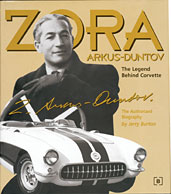Technical Paper
‘Wheel Slip-Based’ Evaluation of Road Friction Potential for Distributed Electric Vehicle
2016-04-05
2016-01-1667
As a typical parameter of the road-vehicle interface, the road friction potential acts an important factor that governs the vehicle motion states under certain maneuvering input, which makes the prior knowledge of maximum road friction capacity crucial to the vehicle stability control systems. Since the direct measure of the road friction potential is expensive for vehicle active safety system, the evaluation of this variable by cost effective method is becoming a hot issue all these years. A ‘wheel slip based’ maximum road friction coefficient estimation method based on a modified Dugoff tire model for distributed drive electric vehicles is proposed in this paper. It aims to evaluate the road friction potential with vehicle and wheel dynamics analyzing by using standard sensors equipped on production vehicle, and fully take the advantage of distributed EV that the wheel drive torque and rolling speed can be obtained accurately.

